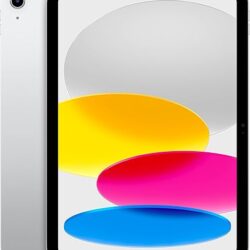- 2. 名词复数
2.1 名词复数的规则变化
 亚马逊导购/好书推荐
亚马逊导购/好书推荐  读新闻学外语
读新闻学外语  卑诗省当天新盘
卑诗省当天新盘
|
情况 |
构成方法 |
读音 |
例词 |
|
一般情况 |
加 -s |
1.清辅音后读/s/ |
map-maps, book-books, cup-cups |
|
2.浊辅音和元音后读 /z/ |
bag-bags, boy-boys, girl-girls, watch-watches |
||
|
以s,sh,ch, x等结尾的词 |
加 -es |
读 /iz/ |
bus-buses, fox-foxes, watch-watches |
|
以ce,se,ze,(d)ge等结尾的词 |
加 -s |
读 /iz/ |
license-licenses, nose-noses, house-houses |
|
以辅音字母+y结尾的词 |
变y 为i再加es |
读 /z/ |
baby—babies, lady-ladies, county-counties |
其它名词复数的规则变化
1) 以y结尾的专有名词,或元音字母+y 结尾的名词变复数时,直接加s变复数:
如: two Marys the Henrys
monkey—monkeys holiday—holidays
比较: 层楼:storey —storeys story—stories
2) 以o 结尾的名词,变复数时, 以辅音+o结尾无生命的名词,直接加s; 以辅音+o结尾有生命(包括动植物)的名词,加es:
a. 加s,如: photo—photos piano—pianos
radio—radios zoo—zoos;
b. 加es,如:potato–potatoestomato–tomatoes
c. 均可,如:zero—zeros / zeroes
3) 以f或fe 结尾的名词变复数时:
a. 加s,如: belief—beliefs roof—roofs
safe—safes gulf—gulfs;
b. 去f,fe 加ves,如:half—halves
knife—knives leaf—leaves wolf—wolves
wife—wives life—lives thief—thieves;
c. 均可,如: handkerchief:
handkerchiefs / handkerchieves
2.2 名词复数的不规则变化
1)child—children foot—feet tooth—teeth
mouse—mice man—men woman—women
注意:与 man 和 woman构成的合成词,其复数形式也是 -men 和-women。
如: an Englishman,two Englishmen.
但German不是合成词, 故复数形式为Germans;Bowman是姓, 其复数是the Bowmans。
2)单复同形
deer,sheep,fish,Chinese,Japanese
li,jin,yuan,two li,three mu,four jin
但除人民币元、角、分外,美元、英镑、法郎等都有复数形式。
a dollar, two dollars; a meter, two meters
3)集体名词,以单数形式出现,但实为复数。
people police cattle 等本身就是复数,不能说 a people,a police,a cattle,但可以说
a person,a policeman,a head of cattle, the English,the British,the French,the Chinese,the Japanese,the Swiss 等名词,表示国民总称时,作复数用。
The Chinese are industries.
中国人民是勤劳的。
4)以s结尾,仍为单数的名词,如:
a. maths,politics,physics等学科名词,为不可数名词,是单数。
b. news 是不可数名词。
c. the United States,the United Nations 应视为单数。
The United Nations was organized in 1945.
联合国是1945年组建起来的。
d. 以复数形式出现的书名,剧名,报纸,杂志名,也可视为单数。
”The Arabian Nights” is a very interesting story-book.
<<一千零一夜>>是一本非常有趣的故事书。
5)表示由两部分构成的东西,如:glasses (眼镜) trousers, clothes
若表达具体数目,要借助数量词 pair (对,双); suit (套)。
a pair of glasses; two pairs of trousers
6)另外还有一些名词,其复数形式有时可表示特别意思,如:goods货物,waters水域,fishes(各种)鱼
2.3 不可数名词量的表示
1)物质名词
a. 当物质名词转化为个体名词时。
比较: Cake is a kind of food. 蛋糕是一种食物。 (不可数)
These cakes are sweet. 这些蛋糕很好吃。 (可数)
b. 当物质名词表示该物质的种类时,名词可数。
This factory produces steel. (不可数)
We need various steels. (可数)
c. 当物质名词表示份数时,可数。
Our country is famous for tea.
我国因茶叶而闻名。
Two teas, please.
请来两杯茶。
2) 抽象名词有时也可数。
four freedoms 四大自由
the four modernizations 四个现代化
物质名词和抽象名词可以借助单位词表一定的数量。
a glass of water 一杯水
a piece of advice 一条建议
2.4 定语名词的复数
名词作定语一般用单数,但也有以下例外。
1) 用复数作定语。
如:sports meeting 运动会
students reading-room 学生阅览室
talks table 谈判桌
the foreign languages department 外语系
2) man, woman, gentleman等作定语时,其单复数以所修饰的名词的单复数而定。
如:men workers women teachers
gentlemen officials
3) 有些原有s结尾的名词,作定语时,s保留。
如:goods train (货车)
arms produce 武器生产
customs papers 海关文件
clothes brush 衣刷
4) 数词+名词作定语时,这个名词一般保留单数形式。
如:two-dozen eggs 两打/(二十四个鸡蛋)
a ten-mile walk 十里路
two-hundred trees 两百棵树
a five-year plan. 一个五年计划
个别的有用复数作定语的,如: a seven-years child
[responsivevoice voice=”US English Female” ]map, book, cup, bag, boy, girl, watch, bus, fox, license, nose, house, baby, lady, county, two Marys, the Henrys , monkey, holiday, storey, story, [/responsivevoice]








